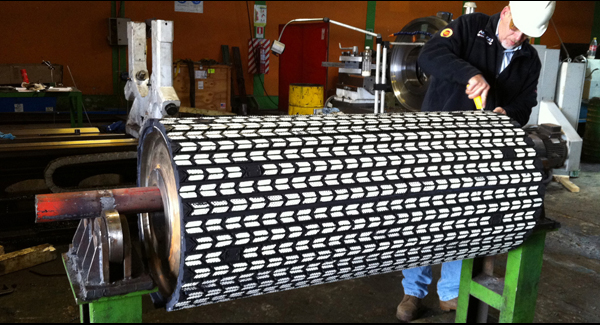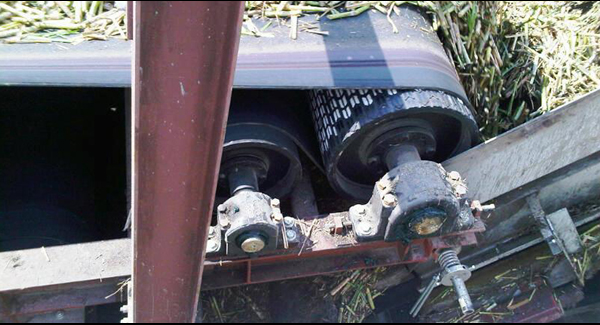Pulley Lagging Services
Pulley Lagging for all styles and types of head, tail, snub, bends, take-ups and drives. Pulley lagging increases the traction between the belt and the pulley, which in turn reduces load and wear on the drive, belt, pulleys, bearings and take-up. Lagged in shop or in place on system. For efficient and economical conveyor operation, proper pulley lagging is integral detail.
ASGCO®’s Pulley Lagging can be done in place on site at your local distributor or at the pulley manufacturer
Increase Traction And Prevent Belt Slippage
Pulley Lagging for all styles and types of head, tail, snub, bends, take-ups and drives.
Pulley lagging increases the traction between the belt and the pulley, which in turn reduces load and wear on the drive, belt, pulleys, bearings and take-up. Lagged in shop or in place on system. For efficient and economical conveyor operation, proper pulley lagging is integral detail
- Extends the life – of key conveyor components.
- Reduces wear – from abrasive materials.
- Prevents belt slippage – by increasing the coefficient of friction between the conveyor belt and the pulley.
- Creates a self-cleaning action – on the pulley surface and prevents the buildup of transported bulk material, water, snow or ice.

Pulley Lagging Application
Pulley Lagging for all styles and types of head, tail, snub, bends, take-ups and drives.
Most often, lagging is attached to the pulley via vulcanizing (preferred in heavy-duty applications). Or, replaceable lagging can be used. The lagging strips are bolted or welded to the face of the pulley and can be easily replaced in the field. Ceramic pulley lagging is constructed from hundreds of individual ceramic tiles molded into a durable rubber backing. In certain applications, ceramic lagging can significantly increase drive traction.
Pulley Lagging Specification Tips
- Plain steel drum pulleys (with no lagging) are best in dry, clean environments where traction is not critical, and when no foreign material is present on the return belt.
- Drum pulleys with plain rubber lagging are typically used in snub applications where traction is not critical.
- Drive pulleys that operate in wet or damp conditions are commonly grooved and are available in a smooth, herringbone or diamond design.
- Ceramic lagged pulleys are used in applications with abrasive material on the return side of conveyor belt.

Ceramic Lagging
Designed to eliminate belt slippage and premature lagging wear.
Ceramic Pulley Lagging provides the solution when conventional rubber lagging fails to correct a belt slippage problem and/or when rubber lagging wears prematurely. Our unique Arrowhead ceramic is designed for the highest drive factors unlike the conventional square tiles.

Drive & Non-Drive Rubber Lagging
Corrects belt slipping and premature wear
Drive and Non-Drive Pulley Lagging is the solution, in an application where rubber is the answer, to help eliminate slippage, increase pulley life and to improve production. A specially formulated combination of synthetic, natural, and neoprene rubber compounds provides our pulley lagging with excellent gripping strength and abrasion resistance.

Semi-Ceramic Lagging
Designed for smaller, non-drive and bend pulleys
ASGCO®’s has added a Semi-Ceramic™ Pulley Lagging to their pulley lagging product line, featuring 40% coverage. The addition of this Semi-Ceramic™ Lagging allows ASGCO® to offer a semi-ceramic product range to provide customers with a choice between full ceramic coverage with our Ceramic Pulley Lagging for a high tension drive pulley’s, as well as less than full ceramic coverage with ASGCO®’s new Semi-Ceramic™ Lagging for smaller pulley’s, non-drive pulley’s and bend pulley’s. ASGCO®’s Semi-Ceramic™ Pulley Lagging provides the solution when conventional rubber lagging fails to correct belt spillage and wears prematurely.













